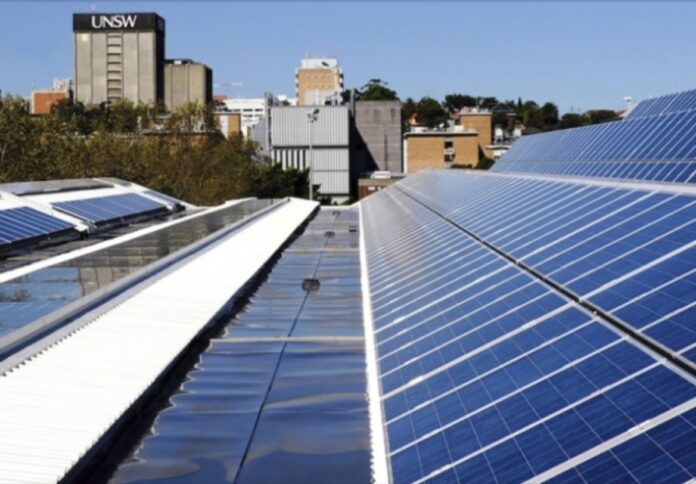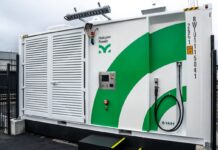
Engineers at UNSW Sydney have created a new, more efficient method of recycling solar panels that can efficiently recover silver, the university said in a news release.
The process, which has been patented, was developed specifically for solar panels in an effort to swiftly and efficiently sort the component elements as a vital step in highly efficient PV recycling.
Researchers stated that recycling solar panels has been challenging in the past because the different components, such as glass, silicon, metals, wiring, and plastic, are intertwined in a way that they are difficult to separate.
Thus, parts of solar panels must be thoroughly separated before reuse to avoid contamination with other materials, and manufacturers will only reuse materials with high purity, which has proven to be difficult to obtain.
In turn, a team led by Professor Yansong Shen from the ProMO lab has unveiled a novel procedure that effectively separates 99 per cent of PV cell particles.
“PV panels usually last for around 20 or 25 years, so given the growth in domestic solar power since the 1990s we can see there is a very pressing and urgent problem to deal with those first generation of panels that are coming to their end-of-life,” Prof Shen explained.
He said that the team wants to reuse and recycle those panels, but there is currently very little research and technology that will allow them to do so successfully and avoid having them simply wind up in a landfill.
“Putting solar panels into landfill is a big issue because there are a number of harmful metals in the panels that can pollute the soil and pollute the water. So for environmental reasons we also need to find a better way to recycle the panels,” the professor added.
According to the International Renewable Energy Agency, by 2030, the total volume of PV waste generated globally could exceed eight million tonnes.
When successive generations of solar panels placed at the beginning of the century reach the end of their useful lives, that number spikes to possibly up to 78 million tonnes of garbage by 2050.
In the study, the ProMO research team at UNSW calculated that between five to 50 million kilograms of silver could potentially be recycled from the cumulative waste by 2050 using their process, given that the equivalent of around 0.64kg of silver per tonne of PV waste has been recovered in trials.
Using federal ARENA and NSW EPA funding, Prof Shen’s team has been working on creating their new processes for close to three years.
These processes combine traditional techniques with a more abrasive separation system by adding sieving aids, the team noted.
“The key to our new process is the addition of the sieving aids which help to crush the solar cells into smaller particles allowing a better separation of all the components. That makes it much easier to recover important elements such as the silver contained in the solar cells,” the professor explained.
The researchers found that the technique worked best when stainless steel balls were used as a sieving addition.
“We spent around three or four months working on that element, also testing with sieving aids made of clay or plastic,” stated team member and MPhil candidate Chengsun He.
The researchers said they may use a conventional chemical leaching method as well as precipitation to extract the targeted components, such as pure silica and silver, once the material has been separated using the new patented approach.
In experiments, the researchers’ method was successful in removing 99.9 per cent of the silver from a solar cell for prospective reuse.
“Our group of 30 researchers is the largest in Australia working on PV recycling technology development, not lifecycle assessment (LCA) only, and probably one of the largest in the world. This patent is just one part of one recycling process for end-of-life solar panels and we are also working on other solutions to the other steps,” explained Prof Shen.
He added, “We are working with some industry partners already, but we would like to engage in more industry collaborations to scale this process up and enhance the economic feasibility of the PV recycling process.”

















